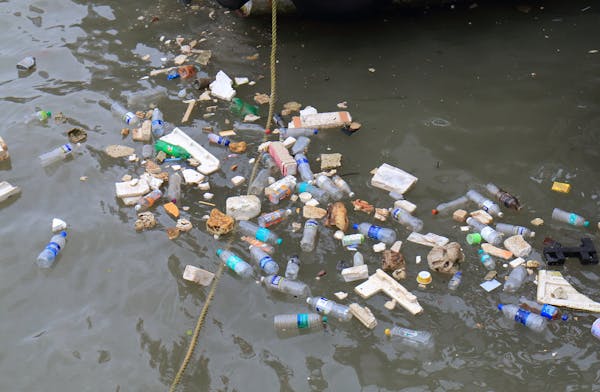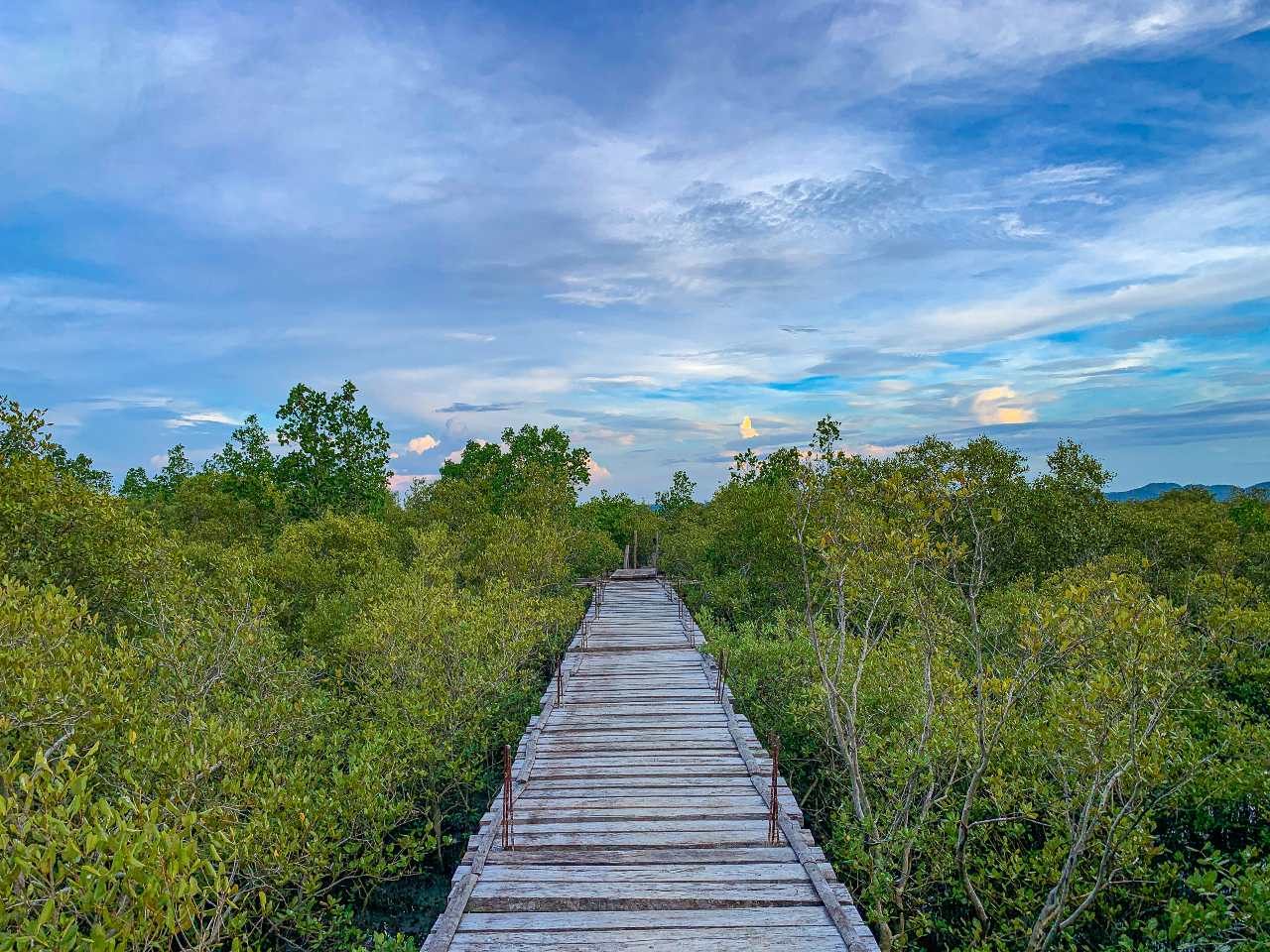MAP News Issue #557 – Oct 22, 2022
PREVIEW VERSION
MAP Website en Español haga clic aqui
The MAP News | |
| FEATURED STORY Mangroves to be restored in seven biospheres of Latin America and the Caribbean  MEXICO – The La Encrucijada Biosphere Reserve in Mexico was a fitting host for the launch of a three-year project on 2 September that will be assessing and restoring mangroves in seven biosphere reserves of Latin America and the Caribbean. These seven biosphere reserves are the Seaflower Biosphere Reserve (Colombia), Guanahacabibes Peninsula Biosphere Reserve (Cuba), Macizo del Cajas Biosphere Reserve (Ecuador), La Encrucijada Biosphere Reserve (Mexico), Darien Biosphere Reserve (Panama) and Noroeste Amotapes-Manglares Biosphere Reserve (Peru). The project is being supported by more than US$1 million in Flemish funds in trust. Moreover, the Xirihualtique-Jiquilisco Biosphere Reserve in El Salvador will be able to take part in reforestation efforts within the same project, thanks to support from the Spanish National Parks Autonomous Agency. Latin America and the Caribbean are home to about 26% of the world’s mangrove forests but their expanse is shrinking rapidly as a consequence of habitat fragmentation and overexploitation. Even though the potential for restoration is particularly high in this part of the world, mangrove conservation and restoration are currently underfunded in the region. That is why UNESCO has stepped in. READ MORE GLOBAL Facing the dual threat of climate change and human disturbance, Mumbai – and the world – should listen to its fishing communities  INDIA – Coastal cities and settlements are at the forefront of climate disruption. Rising sea levels, warmer seas and changes in rainfall patterns are together creating conditions that mean misery for coastal dwellers. Disasters triggered by extreme weather often make headlines, but many problems linked to the climate are harder to see. These include the effects of warmer sea temperatures on marine ecosystems, the encroachment of seawater into once-fertile land, and coastal erosion. Climate risks vary for coastal cities around the world. But according to the Intergovernmental Panel on Climate Change, people living in coastal settlements with high social inequality are particularly at risk. This includes cities with a high proportion of informal settlements and those built near river deltas. The Koli people are one such community. As the original inhabitants of Mumbai, they are spread across a number of historic fishing villages on the city’s coast. But they have steadily been marginalised. Mumbai’s official development plan ignores the role of the Koli, and the ecosystems they depend on, in reducing the climate risks facing the city. This has forced the community to take risk mitigation into their own hands. Through our work with the Koli community, we have seen how their response to human threats has the potential to create a city more resilient to environmental change. READ MORE Cross-cutting research themes for future mangrove forest research  We identified the function of mangrove ecosystems that underpin ecosystem services, their responses to extreme weather and climatic events, and their role as crucial social-ecological systems as important paradigms shaping mangrove research now and in times to come. Since themes around functions and connectivity, ecological resilience to extreme events, and human–environment interactions are likely to be important underpinnings for other coastal and terrestrial ecosystems too, this paper aims to promote discussion within and beyond the mangrove research community and to help the broader plant science field in viewing and understanding the issue of safeguarding mangrove forests for the future. Mangrove ecosystems are an important component of many tropical, subtropical and warm temperate coastlines. READ MORE AFRICA Ivory Coast: 50% of mangrove forests lost in nearly 30 years  IVORY COAST – Smoked fish is very important in Ivory Coast, accounting for 65% (or 1 million kilograms) of all traded fish products, according to studies by the Food and Agriculture Organisation (FAO). According to the same source, fish smoking is mainly carried out by women in coastal fishing communities. This activity is a source of employment, providing 240,000 indirect jobs for women. Nevertheless, this demand and dependence on fish smoking contributes to the degradation and disappearance of mangrove forests, not to mention the health risks associated with exposure to smoke. Indeed, the long branches and underwater roots of mangroves are cut and used as fuel in makeshift ovens. The colourful and durable red mangrove wood gives the fish a golden appearance and a smoky, pungent taste. As a result, the area of mangroves in Ivory Coast, located mainly along the southern coast, has shrunk from about 20,000 hectares in 1990 to about 10,000 hectares today, a loss equivalent to 18,000 football fields, placed back to back. The data on the regression of mangroves in Ivory Coast was presented in Niega in the department of Sassandra in the south of the country, by the FAO through the West Africa Coastal Fisheries Initiative (IPC-AO). READ MORE Egypt replants mangrove ‘treasure’ to fight climate change impacts  EGYPT – On Egypt’s Red Sea coast, fish swim among thousands of newly planted mangroves, part of a programme to boost biodiversity, protect coastlines and fight climate change and its impacts. After decades of destruction that saw the mangroves cleared, all that remained were fragmented patches totalling some 500 hectares (1,200 acres), the size of only a few hundred football pitches. Sayed Khalifa, the head of Egypt’s agriculture syndicate who is leading mangrove replanting efforts, calls the unique plants a “treasure” because of their ability to grow in salt water where they face no problems of drought. “It’s an entire ecosystem,” Khalifa said, knee-deep in the water. “When you plant mangroves, marine life, crustaceans and birds all flock in.” Between the tentacle-like roots of months-old saplings, small fish and tiny crab larvae dart through the shallows — making the trees key nurseries of marine life. Khalifa’s team are growing tens of thousands of seedlings in a nursery, which are then used to rehabilitate six key areas on the Red Sea and Sinai coast, aiming to replant some 210 hectares. But Khalifa dreams of extending the mangroves as far “as possible,” pointing past a yacht marina some six kilometres (four miles) to the south. READ MORE AMERICAS Hurricane Ian left fingerprints on Everglades, but wasn’t a mangroves killer like Irma  USA – From the air, the fingerprints of Hurricane Ian’s journey through the Everglades are easy to see: swaths of beach washed away on Cape Sable, a plume of coffee-colored water leaking into the teal of Florida Bay and a stray sailboat shoved violently ashore, taking down 10 feet of mangroves on the way. Ian’s Category 4 winds and record-breaking storm surge caused much misery in Southwest Florida, along with a death toll that passed 100 and continues to climb, but an initial visual survey of the southern Everglades, Florida Bay and Cape Sable revealed an ecosystem left largely intact. That’s good news for an area still recovering from Hurricane Irma’s wrath in 2017. That storm destroyed 40% of Everglades mangroves, NASA scientists found, and those still-decaying trees could be the source of a persistent algae bloom that is still troubling Florida Bay. The Miami Herald joined Steve Davis, chief scientist of the Everglades Foundation, Monday for what was likely the first aerial survey of South Florida’s ecosystem since Hurricane Ian hit Sept. 28. The flight was provided by Lighthawk, an organization that donates plane rides to conservation partners. READ MORE Building a global mangrove movement  MEXICO – Oscar González Díaz takes a closer look at the mangroves surrounding a small patch of earth and vegetation, one of few remaining in this part of the lagoon. The leaves are sparse, but they will regenerate once the rains pick up and increase the ratio of freshwater to saltwater in the Chumbeño lagoon, connected to the ocean on Mexico’s Pacific coast. A fisherman from Francisco Villa, one of the villages along the lagoon, González Díaz is also a community monitor in this area of the Marismas Nacionales Nayarit biosphere reserve. The protected area is home to 15-20 percent of Mexico’s mangroves, and local monitors have been working in tandem with governmental authorities and with support from conservation groups to monitor, protect, and restore them. “This is natural restoration. More than 40 of us participated,” says González Díaz, standing barefoot in the muddy patch of greenery surrounded by dead mangrove trunks protruding from the lagoon surface. “It was a much taller forest than what is left.” READ MORE ASIA How to restore a lost mangrove forest? An Iloilo town shows the way  PHILIPPINES – Full-grown, healthy mangrove trees stood firmly on the coastline between the municipality of Leganes and the city of Iloilo, burying and stretching their intricately interwoven roots on the shore. “That’s the mangrove rehabilitation area,” said Leganes municipal environment and natural resources officer Wilson Batislaon, pointing to the thick mangrove forest as birds burst into flight. “That’s Leganes Integrated Katunggan Ecopark.” Between 2000 and 2016, the world lost 62% of mangrove forests due to aquaculture, agriculture, urban development, and the timber industry. In the Philippines, 50% of mangrove forests have been lost mainly due to the construction or development of fishponds. The country has been rectifying this by implementing various programs on mangrove reforestation, such as the Leganes Integrated Katunggan Ecopark (LIKE). The land where the ecopark is situated is part of Republic Act No. 366, a law granting the municipality of Leganes the usufruct of a certain parcel of land of the public domain in Iloilo for communal purposes. READ MORE Eco-activists say CIDCO is yet to transfer 1,680 ha mangroves to forest dept  INDIA – The City and Industrial Development Corporation of Maharashtra (CIDCO) is yet to transfer 1,680 hectares of mangroves in Panvel taluka, equivalent to the size of 168 Azad Maidans, to the forest department, claim environmentalists. CIDCO on the other hand rubbished any such claim and said all the mangroves under its possession have been transferred. According to the documents obtained by NatConnect Foundation, as per the Maharashtra Remote Sensing Application Centre (MRSAC) map of 2005, over 2,595 hectares of mangroves existed in Panvel taluka, of which CIDCO handed over 582.5 ha to the forest department. Plus, the revenue department earmarked 428 ha which is yet to be given to the forest department. To oversee the increasing load, the Navi Mumbai cell of the Mangrove Conservation Unit has also put up a request with the Divisional Forest Officer (DFO) Mumbai for an additional staff of nearly 30 to oversee the conservation of mangroves. READ MORE Green Climate Fund to help revive mangrove ecosystem  INDIA – The Andhra Pradesh Forest Department has prepared the ground to restore nearly 300 hectares of salt marshy land and restoration of mangrove and mudflat ecosystems along the State’s coastline under the United Nations’ Green Climate Fund (GCF). Sanctioned in 2019, the GCF was supposed to be grounded in Andhra Pradesh. However, the preparations to launch the mission of the GCF have reportedly been completed recently. The UNDP has granted ₹298 crore for the six-year project through which coastal communities would be roped in for protection and restoration of the respective ecosystem including mangroves and marshy lands in three States — Andhra Pradesh, Odisha and Maharashtra. As many as 25 landscapes have been identified in the three States. Nine of them are in Andhra Pradesh, where the local communities would be provided employment opportunities and roped in for protection and restoration of their respective landscape. READ MORE Pease consider donating to MAP to keep it going. *Articles in this newsletter may mention practices being used and/or show exagerated results being claimed without proof. Stories are presented here in effort to show mangrove related activity around the world and do not necessarily reflect Mangrove Action Project’s views or mangrove restoration best-practices. | NOTICEChildrens Art Calendars 2023 ORDER YOURS HERE
ACTION ALERTSDo not sacrifice Congo’s rainforests to the oil industry! TAKE ACTION TAKE MAP SURVEY Please see the survey questionnaire we at MAP put together to discover where the shrimp industry is still having major adverse effects on mangroves and local communities. Stop the Dredging – 6.7 million cubic meters of sand from the Addu atoll basin will destroy nature, biodiversity and the natural defences and resilience of this UNESCO Biosphere Reserve. SIGN THE PETITION Keep fossil fuels out of Bangladesh for the health and wellbeing of the local communities, the beautiful regional beaches and forests, the Bangladeshi economy, and our shared climate. SIGN PETITION Stop this total madness Stop the biggest heated oil pipeline in the world — right through the heart of Africa! Like this newsletter? Pease consider donating to MAP to keep it going. Giving could never be easier MAP Website en Español 13 Year old Linda Li “Mangrove Adventure” from Kid Dream Art School
Video: Mangroves for the Future WANT TO GET INVOLVED?
Like this newsletter? Pease consider donating to MAP to keep it going. Giving could never be easier
Interested in connecting or working with MAP? Check out our opportunities here MANGROVE ISSUES Want to learn more about mangroves? What is CBEMR? Download MAP’s 2 page CBEMR Information Sheet containing links to all MAP’s CBEMR resources – CLICK HERE View MAP’s uploaded Videos at Question Your Shrimp Consumer/Markets Campaign! Mangroves: Guidebook to Malaysia – Click Here SHARE MAP’S VISION Our short documentary, Reducing the Risk of Disaster through Nature-Based Solutions : Mangroves NASA Study Maps the Roots of Global Mangrove Loss Marvellous Mangroves Curriculum The Marvellous Mangroves Curriculum begins with a simple philosophy – getting future generations to not only learn about, but understand the importance of mangrove forests. VISIT Marvellous Mangroves Curriculum in Bangladesh – WATCH VIDEO
Like this newsletter? Pease consider donating to MAP to keep it going. Giving could never be easier
“Question Your Shrimp” Campaign Question Your Shrimp – is it really sustainable? Sign the Petition Note to Our Readers: We strive to keep active links in our newsletter. However, due to circumstances beyond our control, occasionally links to stories may become broken. If you find a link to a story is not functioning, please cut and paste the headline into your browser search bar. In most cases you should be able to locate the original story. Not yet a MAP News subscriber?
|
Mangrove Action Project Click here to view past newsletters
| |

















